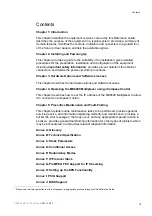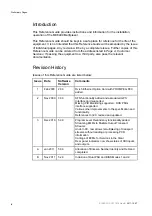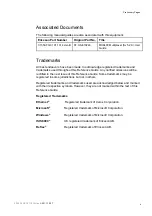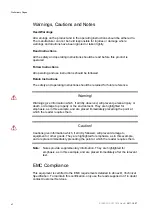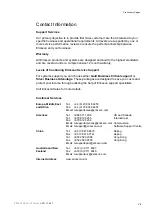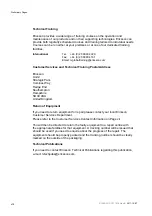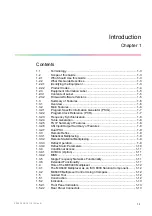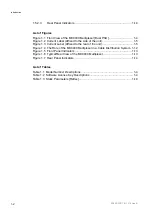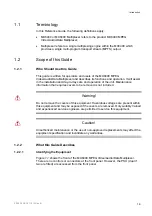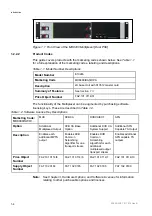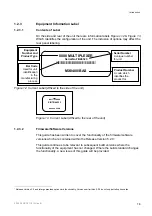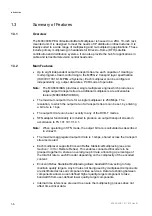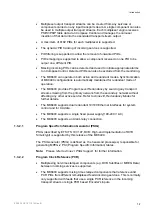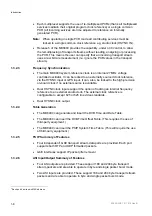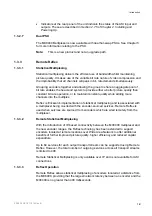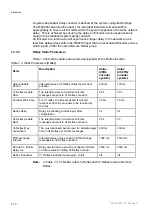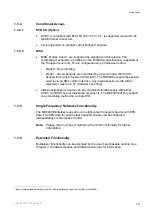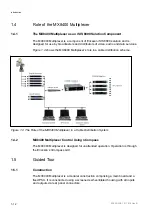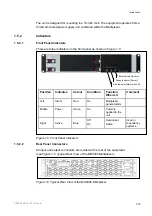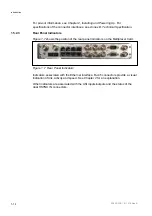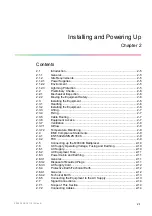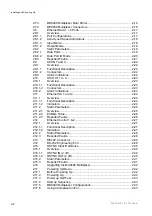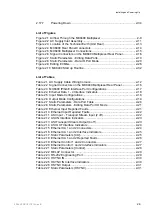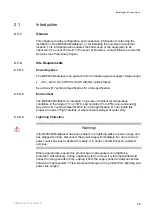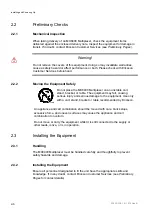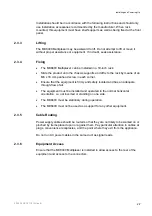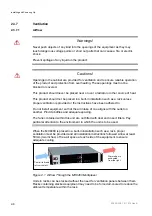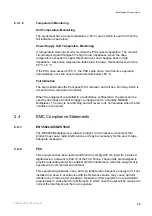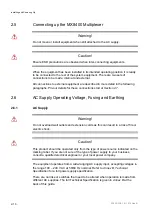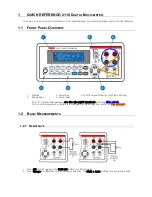
Introduction
•
Indicators at the rear panel of the unit indicate the status of the ASI input and
outputs. These are described in
Section 2.7.5
of
Chapter 2, Installing and
Powering Up
.
1.3.2.7
Dual PSU
The MX8400 Multiplexer is now available with dual hot-swap PSUs. See
Chapter 5
for more information relating to the PSU.
Note:
This is a new product and not an upgrade path.
1.3.3
Remote Reflex
1.3.3.1
Statistical Multiplexing
Statistical multiplexing delivers the efficient use of bandwidth whilst maintaining
picture quality. It makes use of the variable bit rate nature of video compression and
the improbability that all channels will peak in bit- rate demand simultaneously.
Grouping encoders together and allowing the group to share an aggregate pool of
bit rate enables the head-end system to provide either a better picture quality than
constant bit rate operation, or to maintain constant quality while adding more
channels into the multiplex.
Reflex is Ericsson's implementation of statistical multiplexing and is associated with
a multiplexer being co-sited with the encoder-sourced services. Remote Reflex is
used when services are sourced from encoders which are sited remotely from the
multiplexer.
1.3.3.2
Remote Statistical Multiplexing
With the introduction of IP-based connectivity between the MX8400 multiplexer and
the new encoder ranges, the Reflex technology has been extended to support
encoders located at remote locations over Wide Area Network to offer additional
benefits of further improved picture quality, higher efficiency and reduced capital
expenditure.
Up to 64 services for each output transport stream can be supported using Remote
Reflex. However, the total number of outgoing services across all transport streams
is limited to 400.
Remote Statistical Multiplexing is only available over IP and is not available for ASI
connections.
1.3.3.3
Reflex Operation
Remote Reflex allows statistical multiplexing of encoders located at a distance from
the MX8400, providing that the largest network latency between an encoder and the
MX8400 is no greater than 400 milliseconds.
2/1553-FGC 101 1014 Uen B
1-9
Summary of Contents for MX8400
Page 1: ...MX8400 Multiplexer Software Version 5 2 0 and later REFERENCE GUIDE 2 1553 FGC 101 1014 Uen B...
Page 26: ...Installing and Powering Up 2 1553 FGC 101 1014 Uen B 2 4 BLANK...
Page 94: ...Operating the Multiplexer using nCompass Control 2 1553 FGC 101 1014 Uen B 4 18 BLANK...
Page 96: ...Preventive Maintenance and Fault finding 2 1553 FGC 101 1014 Uen B 5 2 BLANK...
Page 146: ...Technical Specification 2 1553 FGC 101 1014 Uen B B 20 BLANK...
Page 148: ...Static Parameters 2 1553 FGC 101 1014 Uen B C 2 BLANK...
Page 186: ...Redundancy Modes 2 1553 FGC 101 1014 Uen B E 2 BLANK...
Page 192: ...IP Protocols 2 1553 FGC 101 1014 Uen B F 2 BLANK...
Page 196: ...IP Protocols 2 1553 FGC 101 1014 Uen B F 6 Figure F 3 Editing Stack Download Ports...
Page 198: ...ProMPEG FEC Support for IP Streaming 2 1553 FGC 101 1014 Uen B G 2 BLANK...
Page 204: ...Setting up the SFN Functionality 2 1553 FGC 101 1014 Uen B H 2 BLANK...
Page 212: ...Setting up the SFN Functionality 2 1553 FGC 101 1014 Uen B H 10 BLANK...
Page 214: ...PSIG Support 2 1553 FGC 101 1014 Uen B I 2 BLANK...
Page 220: ...BISS Support 2 1553 FGC 101 1014 Uen B J 2 BLANK...

